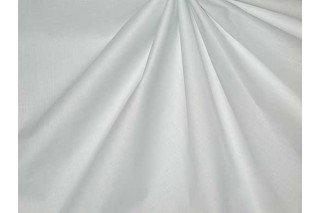Drapery interlining is a crucial component in creating luxurious, full-bodied drapery that can add a touch of elegance to any room. If you’re looking to enhance the appearance of your home, or if you’re a professional decorator looking for tips on creating high-quality drapery, this guide is for you. In this article, we will explore what drapery interlining is, why it’s important, the different types of interlining available, and how to select the best one for your needs.
What is Drapery Interlining?
Drapery interlining is a layer of fabric that is sandwiched between the face fabric and the lining of a drapery panel. It is typically made of cotton, polyester, or a blend of the two, and is available in different weights and thicknesses. The purpose of drapery interlining is to provide extra body and weight to the drapery, giving it a full, luxurious appearance.
Why is Drapery Interlining Important?
Drapery interlining is important because it can drastically improve the appearance of a drapery panel. Without interlining, drapery can appear flat, limp, and lackluster. Interlining provides fullness, body, and weight, giving the drapery a luxurious appearance that can make any room feel more inviting and elegant.
Types of Drapery Interlining
There are several types of drapery interlining available, each with its own unique characteristics and benefits. Here are the most common types of drapery interlining:
Bump Interlining: Bump interlining is a heavy, thick interlining that is used to add extra body and weight to drapery panels. It is typically made of a cotton or cotton blend material and is ideal for use in heavier drapery fabrics.
Flannel Interlining: Flannel interlining is a soft, lightweight interlining that is used to provide insulation and add fullness to drapery panels. It is typically made of a cotton or cotton blend material and is ideal for use in lighter-weight drapery fabrics.
Synthetic Interlining: Synthetic interlining is a lightweight, synthetic material that is used to provide body and fullness to drapery panels. It is typically made of polyester or a polyester blend material and is ideal for use in modern, lightweight drapery fabrics.
Fleece Interlining: Fleece interlining is a heavy, thick interlining that is used to add extra body and weight to drapery panels. It is typically made of polyester material and is ideal for use in heavier drapery fabrics.
How to Select the Best Drapery Interlining
Selecting the best drapery interlining depends on several factors, including the weight and type of fabric you’re using, the desired level of fullness and weight for your drapery panel, and your personal preferences. Here are some tips for selecting the best drapery interlining:
Consider the weight of your fabric: If you’re using a heavy fabric for your drapery panel, you may want to select a heavy interlining, such as bump or fleece interlining. If you’re using a lighter-weight fabric, you may want to select a lighter-weight interlining, such as flannel or synthetic interlining.
Determine the desired level of fullness: The amount of fullness you want in your drapery panel will also impact your selection of drapery interlining. If you want a very full, luxurious look, you may want to select a heavy interlining, such as bump or fleece interlining. If you want a more streamlined look.


Leave a Reply